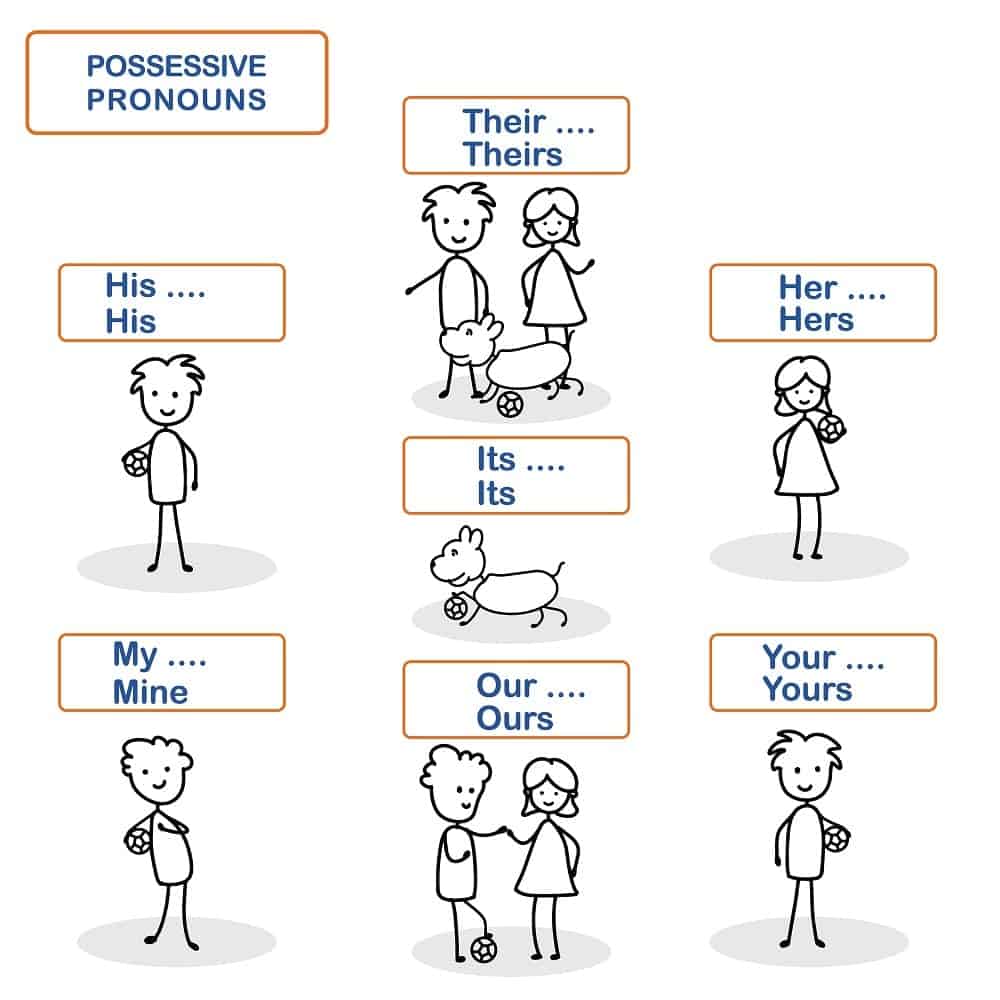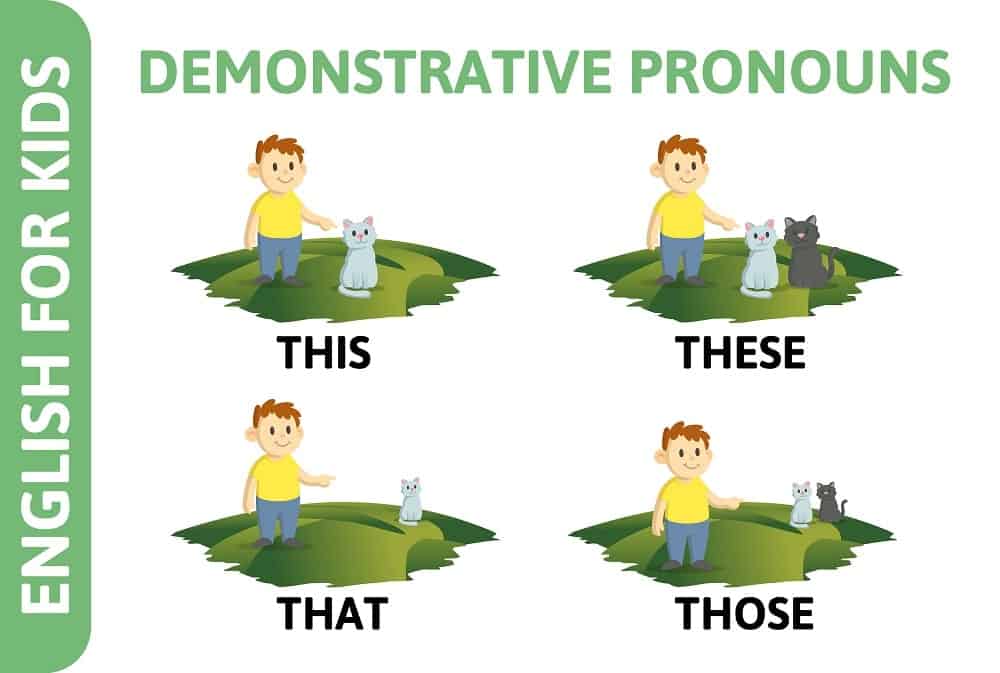
A pronoun is a word that replaces a noun in a sentence. Pronouns are traditionally regarded as parts of a speech. They are used to avoid repetition of the noun in a sentence or narrative. For instance, if you are talking about Peter, it would seem unwise to repeat the name “Peter” throughout the sentence. Instead, you could replace the name “Peter” with the pronoun “he”. For example, Tell Peter that he can come for his cash tomorrow. Now that we understand their importance, let’s talk about their types!
There are several categories of pronouns, and in this article, we will go into detail. Some can be in more than one form. To ensure you are proficient in the English language, you must understand these categories. In this article, we will help you know them in detail.
Related: Types of Adverbs | Types of Diction | Types of Adjectives | Types of Verbs | Types of Prepositions | Types of Conjunctions | Types of Nouns
Personal Pronouns
Personal pronouns replace the name of a person in a sentence. This category of pronouns has two classes:

Subjective personal pronouns
They replace personal names that have been used subjectively in a sentence. These pronouns include; I, you, he, she, it, we, and they.
For example:
- John wants to go home (John is the subject)
He wants to go home (he is the subjective pronoun)
- Jane is sweeping the house. (Jane is the subject)
She is cleaning the house. (she is the subjective pronoun)
Objective personal pronouns
They are used to replace personal names, which are being used as objects in a sentence. The pronouns are; me, you, her, him, it, us, and them.
For example:
- Mary slapped John. (John is the object)
Mary hit him (him is the objective pronoun)
- My mum is talking to Jane and Peter. (Jane and Peter are the objects)
My mum is talking to them. (Them is the objective pronoun)
Possessive pronouns

Possessive pronouns show ownership in a sentence. Similarly, these pronouns have two classes.
Dependent (limiting) possessive pronouns
When used in a sentence, the noun follows the dependent pronouns. These pronouns include; my, our, your, his, her, its (without apostrophe), and their.
For example:
- This is my car.
- I would like to see your parents.
- I saw its…
Independent(absolute) possessive pronouns
Independent pronouns are not followed by a noun when used in a sentence. Instead, they act as a substitute for the thing that is owned. They include; mine, his, hers, ours, yours, its, and theirs.
For example:
- The book is…
- This house is not ours but…
Relative pronouns
Relative nouns form another class of pronouns and give additional information about a subject in the sentence. They join clauses to a pronoun or noun. Relative pronouns include; that, what, who, whom, and which. Which and that refer to things and animals and who to people.
For example
- The man who drove you to work is my brother. (“drove you to work” is the additional information, and “who” is the relative pronoun)
- The car which ran over a person was arrested trying to escape. ( “ran over a person” is the additional information and “which” is the relative pronoun)
N.B. using who/whom can be very confusing. However, it is vital to note that “who” is a subject pronoun, just like those previously mentioned. On the other hand, “whom” is an object pronoun. Therefore, “whom” comes before the preposition or the verb it modifies.
For example:
- Who should I say is calling?
- Whom did you meet at the café?
Demonstrative pronouns

These pronouns show the distance physically or metaphorically and take the noun mentioned. Demonstrative pronouns have two classes;
Singular demonstrative pronouns
They include; this and that.
For example:
- This is my book.
- That is my dictionary.
Plural demonstrative pronouns
They include; these and those.
For example:
- These books are mine.
- Those dictionaries should be in the library.
Indefinite Pronouns
These pronouns refer to an unspecified object(s), place(s), and or a person. Indefinite pronouns can occur anywhere in the sentence. These pronouns include; someone, somebody, everywhere, everybody, nobody, nowhere, whichever, wherever, anyone, none, no one, and other.
For example, in a sentence:
- Everybody mimics me when I am talking.
- Everybody wants to know what happened.
Interrogative pronouns

These pronouns do as they say. They are used in sentences to ask questions. These pronouns are; who, whom, which, what, and whose.
Example in a sentence:
- Who was that?
- Whose book is this?
Reflexive pronouns
Reflexive pronouns end with -self/-selves. We use reflexive pronouns when the object and the subject are referring to the same thing or person. These pronouns can be in two forms;
Singular reflexive pronouns
Use a Singular reflexive pronoun when the subject and the object refer to the same thing or person. They end with -self. These pronouns are; myself, yourself, himself, herself, and itself.
Example in a sentence:
- I read myself the novel.
- The lecturer herself came to the class and dictated the notes herself.
Plural reflexive pronouns
They are used when the object and subject refer to the same things or people. Also, they end with -selves. Plural reflexive nouns include; yourselves, themselves, and ourselves.
Example in a sentence:
- They decided among themselves not to trust him again.
- We read the story ourselves.
Intensive pronouns
These categories of pronouns add emphasis to a pronoun or noun. However, they are very similar to reflexive pronouns, but the usability is different. Intensive pronouns are; myself, yourself, himself, herself, itself, yourselves, themselves, and ourselves.
Example in a sentence:
- He himself talks too much
- They killed the leopard themselves.
Reciprocal pronouns
They represent mutual actions or relationships. This category is not very popular, but people use these pronouns very frequently. There are only two reciprocal pronouns in the English language; each other and one another.
Examples in a sentence:
- They hugged each other as the crowd clapped.
- They love one another.

Conclusion
Being knowledgeable in the different types of pronouns improves your proficiency in the English language. This knowledge goes ahead to reducing redundancy in your writing. As a result, your communication will be efficient and effective.
FAQs
Is there a difference between the use of “what” and “which” in a question?
Yes, there’s a difference. “what” question is always open, and someone can still choose any answer they want. However, we use “which” when there is a limitation of choices from which a person can choose. Which can always be interpreted as “which of these”
What’s the difference in composing a sentence between “who” and “whom”?
“Whom” works as an object in a sentence while “who” is always subjective to the verb.
Is there a difference between “somebody” and “someone”?
No. “somebody” and “someone” are the same. However, “someone” is used more in writing than “somebody.”
Is “somebody” plural or singular?
Singular. Indefinite pronouns that always end with -body are in singular.

Jon Dykstra is a six figure niche site creator with 10+ years of experience. His willingness to openly share his wins and losses in the email newsletter he publishes has made him a go-to source of guidance and motivation for many. His popular “Niche site profits” course has helped thousands follow his footsteps in creating simple niche sites that earn big.





